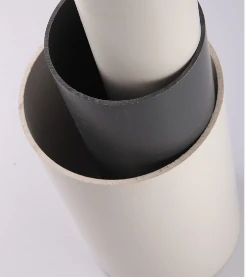Des . 20, 2024 06:17 Back to list
Understanding the Benefits and Applications of HDPE Drainage Pipes in Modern Construction
Understanding HDPE Drainage Pipes Benefits and Applications
High-Density Polyethylene (HDPE) drainage pipes have emerged as a popular choice in various construction and civil engineering projects due to their remarkable durability, flexibility, and resistance to environmental stresses. Ideal for stormwater management and wastewater applications, HDPE pipes are revolutionizing traditional drainage systems. This article delves into the characteristics, advantages, and applications of HDPE drainage pipes, illustrating why they are becoming the go-to solution for many drainage needs.
What is HDPE?
High-Density Polyethylene (HDPE) is a thermoplastic polymer made from petroleum. Known for its high strength-to-density ratio, it is utilized in numerous applications, including containers, bottles, and piping systems. In drainage applications, HDPE pipes are produced in various diameters and lengths, making them suitable for a wide range of projects.
Key Benefits of HDPE Drainage Pipes
1. Durability One of the most significant advantages of HDPE drainage pipes is their exceptional durability. HDPE is resistant to corrosion, chemicals, and environmental stresses, allowing the pipes to maintain their functionality over a long lifespan—often exceeding 50 years. This resistance to corrosion not only extends the life of the system but also reduces the frequency of repairs and replacements, ultimately saving costs.
2. Flexibility Unlike rigid pipes, HDPE pipes are highly flexible, which allows them to adapt to changes in the ground without cracking or breaking. This flexibility is particularly beneficial in areas prone to ground movement, as it can accommodate shifting soils without disrupting the integrity of the drainage system.
3. Lightweight and Easy to Install HDPE pipes are significantly lighter than traditional materials like concrete or clay, which makes transportation and installation more manageable. The reduced weight allows for easier handling and less heavy equipment requirement, resulting in lower installation costs and time.
4. Sustainability HDPE is a recyclable material, making it an environmentally friendly option. Moreover, the long lifespan of HDPE pipes contributes to sustainability by reducing waste generated from frequent replacements. Their efficient manufacturing process also results in lower energy consumption.
hdpe drainge pipe

5. Hydraulic Efficiency The smooth interior surface of HDPE pipes minimizes friction, enhancing the flow capacity. This design results in efficient drainage systems that can handle high volumes of water, making them suitable for various applications, from residential drainage to large municipal systems.
Applications of HDPE Drainage Pipes
HDPE drainage pipes are versatile and can be employed in multiple applications. Some of the most common include
1. Stormwater Management HDPE pipes are ideal for managing stormwater runoff in urban areas, helping to prevent flooding and soil erosion. Their efficiency in handling large volumes of water makes them suitable for use in storm sewers and detention systems.
2. Wastewater Conveyance These pipes are commonly used in municipal wastewater systems due to their resistance to hydrogen sulfide and other corrosive compounds found in wastewater.
3. Agricultural Drainage Farmers and landowners utilize HDPE drainage systems to manage excess water in agricultural fields. The flexibility of HDPE allows for easy installation in challenging terrains, helping to optimize crop yield.
4. Industrial Applications HDPE pipes are used in various industrial applications where resistant and reliable piping systems are required for transporting liquids and gases.
Conclusion
HDPE drainage pipes represent a modern approach to managing water effectively and sustainably. Their numerous advantages, such as durability, flexibility, and efficiency, make them a preferred choice in a wide array of drainage applications. As construction practices continue to evolve, the adoption of HDPE pipes will likely increase, playing a critical role in promoting efficient water management solutions. Whether for urban infrastructure, agricultural fields, or industrial settings, HDPE drainage pipes are paving the way for more resilient and sustainable drainage systems.
-
Durable HDPE Sheet | Versatile & Impact-Resistant Plastic
NewsAug.13,2025
-
Premium PVC Soft Sheets: Clear, Flexible & Durable
NewsAug.12,2025
-
Premium PVC Round Rods: Durable, Chemical Resistant, Easy to Machine
NewsAug.11,2025
-
PP U-channel: Chemical-Resistant, Lightweight & Durable
NewsAug.10,2025
-
Transparent PVC Pipe: Clear Flexible Tubing for Fluids
NewsAug.09,2025
-
Durable PP Rigid Sheet: Versatile & High-Quality Plastic Panels
NewsAug.08,2025

